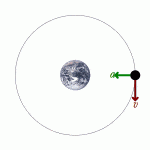Types Of 9mm Ammunition
Guns are now widely spread and are gaining even more popularity and in that case, the different types of 9mm ammunition are also becoming relatively famous. There are about eight various types of 9mm ammunition, with the 9mm Parabellum being the foundation and the most popular of them all. But let us first have a quick history lesson about guns and what they carry, the bullets.
The first ever recorded sighting and usage of the gun was on China way back 1000AD, and it was a bamboo tube used to fire a spear with the aid of gunpowder and the gunpowder was also made by the Chinese. The etymology of the word gun was believed to be derived from the name of a particularly historic weapon, the Domina Gunilda. The Domina Gunilda was a large ballista, which mechanically bolts enormous objects, like a catapult. It was mounted in Windsor Castle during 14C. The term gun also traces its name from an Old Norse woman’s name, Gunnhildr, which is basically two, combined Norse words referring to battle. Nonetheless, the word gun was used around 14 to 15C. Bullets, on the other hand, are also known as ammunitions, powder, primer or shells. Ammunitions are devices used to damage the target by impact or penetration. They usually don’t contain any kind of explosives.
Now that you have the basic information and knowledge about guns and bullets, we can now discuss the types of 9mm ammunitions. The most basic type of 9mm ammunitions, most popular and widely used ammunition in all military forces is the 9mm Parabellum or 9mm Para. This type of 9mm ammunition is designed by Georg Luger. It was introduced to the public by a German weapons manufacturer in the abbreviations of DWM on 1902. The name for this type of 9mm ammunition was derived from the Latin quotation, ‘Si vis pacem, para bellum,’ which means ‘If you seek peace, prepare for war,’ in English. This certain type of 9mm ammunition is used during the World War 1, up until now. Its affordability and world-wide availability are some of the factors that attribute to its growing and stable popularity. The 9mm Para is also known as 9mm Luger.
The second type of 9mm ammunition is the 9x19mm +P Variant, which is the first attempt of ballistic improvement of the 9mm Para. Its main improvement is the use of the jacketed hollow bullet technology which gives this type of 9mm ammunition better terminal effectiveness because this improvement of the 9mm Para was more likely to expand and less likely to fragment. The next type is the 9mm NATO Variant. This type of 9mm ammunition is a standard pistol for a NATO caliber and other calibers around the world. The 9mm NATO Variant is considered the overpressure of the 9mm Parabellum. The third type of 9mm ammunition is the 9mm SESAMS which are commonly used for training rounds and simulations of the US Military. This type of 9mm ammunition is commonly painted blue to distinguish themselves among other types of 9mm ammunitions. 9mm SESAMS can also be shot using a Beretta M9 service pistols. They are called Simulations in the market.
Another type of 9mm ammunition is the 7N21 which features a hardened steel penetrator core that is enclosed by a bimetal jacket. It also has an armor-piercing bullet, and generated approximately 280 MPa pressure. The fifth type of 9mm ammunition is the 7N31 is very much similar to the 7N21, but has lighter ammunition that gives off higher muzzle velocity. The 7N31 type of 9mm ammunition was used for the PP-90M1 and PP-2000 submachine guns. Both 9mm ammunitions are developed and made by the Russians that aim to defeat body armor.
Next type of 9mm ammunition we’ll discuss is the 9mm Major. 9mm Major ammunition is commonly known to competitors in the IPSC and USPSA open division competitions. This type of 9mm ammunition is usually large charges of a slow burning powder mixed with light bullets. They are considered as alternative to the .38 Super, but 9mm Major can damage your gun more than any other type of 9mm ammunition. And the last type of 9mm ammunition is the VBR-B. The VBR-B type of 9mm ammunition is designed to increase the content of the wound cavity and pose a greater chance on hitting a vital organ.
Now that you have an idea on guns and the history of bullets, and knowledge on the different types of 9mm ammunitions, you can now decide and take your pick amongst these types of ammunitions. But, be careful in choosing; choose the one that best suits you and your gun, the one that won’t bring damage and strain to your gun, and the one that fits perfectly to your intention. Use your gun wisely and carefully too, don’t just point it to anybody, whether it is or not loaded with any type of 9mm ammunition.






